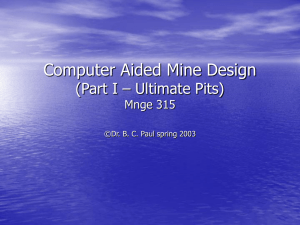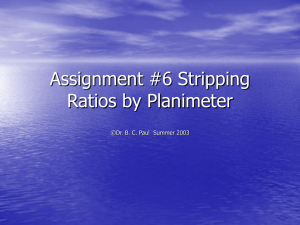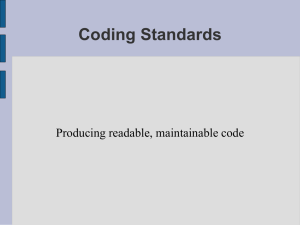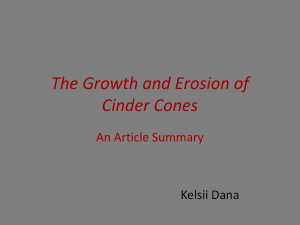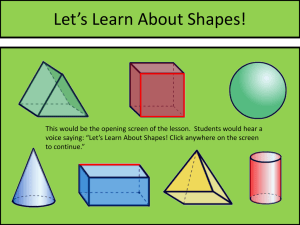Lecture 7b Calculating Stripping Ratios
advertisement
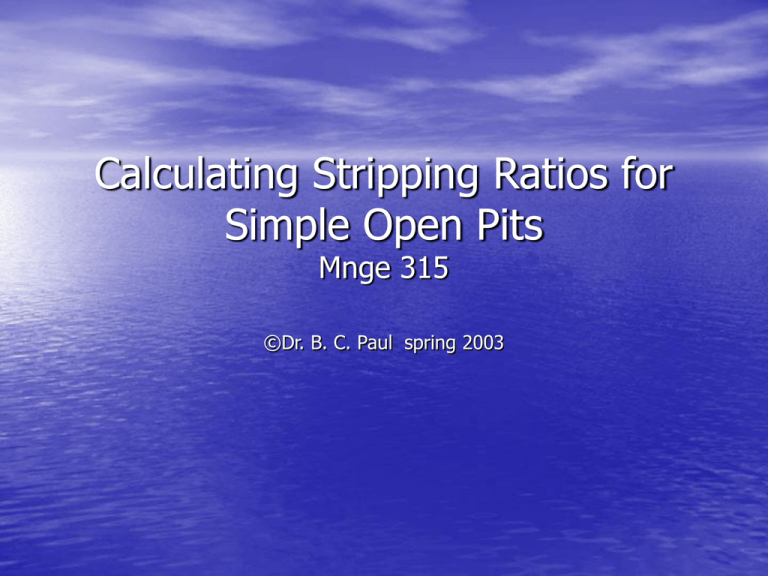
Calculating Stripping Ratios for Simple Open Pits Mnge 315 ©Dr. B. C. Paul spring 2003 Open Pit on Pipe Shaped Disseminated Deposit Cone 1/3*Base*Height Cylinder Base * Height You’ve seen these Formulas derived in Your calculus classes Getting Our Cone Our Frustum Cone = The Big Cone we Imagine - The Little Cone We are missing Getting Our Overburden The Frustum Cone we just calculated - The Part of that Volume that is PAY DIRT! Calculating Stripping Ratio Just One Catch Calculation we just did Was based on Volumes Stripping Ratio = Overburden / Ore We assumed no material Was rehandled and all Ore was recovered Called a Geologic Volumetric Stripping Ratio The Problem with Volumetric Stripping Ratios • Most Open Pit materials are weight limited in the trucks – The economics are driven by weights not volumes • Easy to Fix – Overburden Tons =OB Volume * Tons/unit vol – Ore Tons = Ore Volume * Tons/unit vol • Make sure you don’t mess up your units • Divide again to get Weight based SR Interesting Observation What happens if we Change the slope Angle? What just happened to the overburden volume? What just happened to our stripping ratio? Conclusion – Pit Slope Makes a Big Difference in Open Pits Comments on Generality • 1/3rd base * height really works on cones of any base • • • • • shape Base * Height works on “Cones” of any base shape Formulas work on ellipse and oval bases Formulas work even if the “pipe” shaped ore body is not vertical Formulas work for irregular shaped bases (provided you can get the area) Conclusion – importance of Pit Slope on Open Pit Economics is a general truth not restricted to circular cones, frustums, and cylinders Your Assignment • Produce a Spreadsheet that will calculate • stripping ratios for Cone and Cylinder Shaped ore deposits Use it for the following Ore Body – Ore is a vertical standing cylinder 700 ft in diameter • The cylinder starts at the surface and goes to indefinite depth (ie keeps on going) – The Pit is a circular cone that is flat on the bottom (700 ft in diameter) – also called a frustum cone – The Pit Slopes back at 42 degrees from the horizontal Your Assignment Cont. • Make the Pit 665 feet deep from the surface to the flat bottom of the cone – Find the Volumetric Stripping Ratio • Now Assume that Ore weighs 4700 lbs/cubic yard and Waste weights 4200 lbs/cubic yard – What is the weight based stripping ratio? • Change the Slope to 35 degrees – What is the weight based stripping ratio now? • Plot the stripping ratio as a function of pit slope in 1 degree increments from 35 degrees down to 21 degrees Comments and Tips • If you use a spreadsheet then the changes in cone angle will be instant. If you do it by hand it will be tedious • Most Spreadsheets calculate their trig functions in radians while we think in degrees – To convert degrees to radians • Deg * Π / 180 = Radians More On Commentary • You will need to calculate three shapes – A large Cone that starts at the surface and comes to point at the specified angle – A small Cone that is 700 feet in diameter and slopes to a point at the specified angle – A cylinder 700 feet in diameter and 665 feet in height • The large cone minus the small cone is the total • • pit volume If you subtract the cylinder it will leave you with overburden volume The cylinder is your ore volume Some Geometry Tips Sizing the Small Cone 1 * * 350 2 * Height Volume 3 This side is ½ cone diameter or 350 ft This is a right angle (meaning this is a Right triangle) This angle is the slope angle Height of cone can be found using the tangent function Tan(θ) = Side Opposite (height we are after)/ Side adjacent (the 350 ft we know) 350 * Tan(θ) = Height of Triangle This Triangle Represents ½ the small cone More Geometry Tips Sizing the Big Cone This is a right triangle This is the Slope Angle Radius of Our Cone is (Height of small cone + 650)/ Tan(θ) = Radius This side is Height of small cone plus 665 feet

